Japanese Meditation: Guide to Mindfulness and Tradition
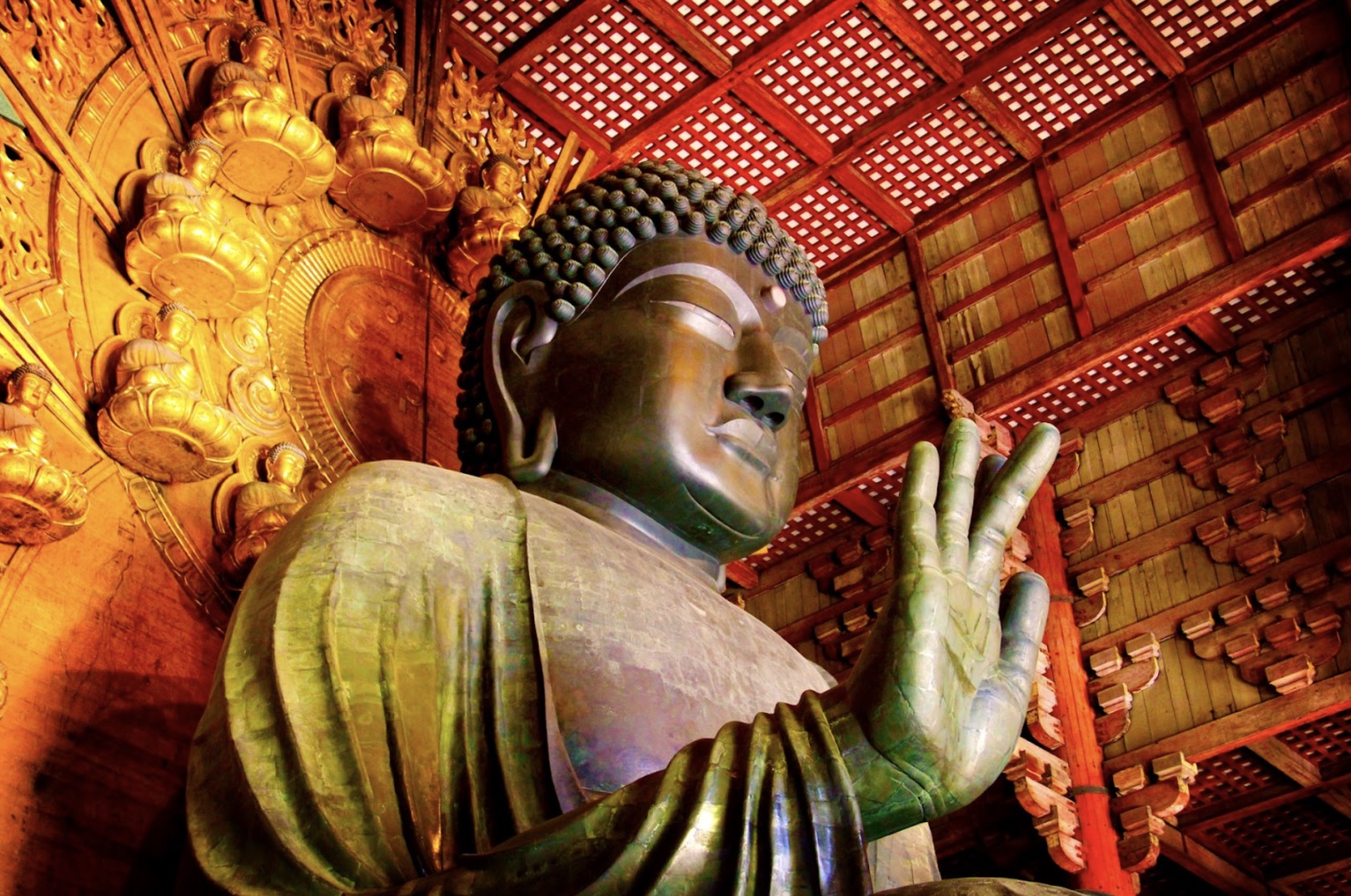
Meditation has become a global practice, Japanese meditation, mindfulness, and Zen practices are increasingly sought after by people looking to reduce stress and improve focus. Japanese meditation provides proven techniques rooted in Zen, Shingon, and other traditional schools that continue to inspire people today.
What is Japanese Meditation?
Japanese meditation is not a single method but a collection of practices that evolved through centuries. Unlike Western mindfulness, Japanese meditation emphasizes discipline, silence, and spiritual grounding. Japanese meditation, including Zen meditation, Shingon meditation, and mindfulness practices unique to Japan, offers both traditional depth and modern stress relief benefits.
Zen Meditation Practices

Zazen (座禅)
Zazen is the most widely recognized form of Japanese meditation. Practitioners sit in a stable posture, usually cross-legged, focusing on the natural rhythm of their breath while observing thoughts without attachment. This simple act of sitting quietly becomes a powerful training of awareness, creating mental space where clarity can arise. In Zen monasteries, sessions often extend for hours, but beginners are encouraged to start with just a few minutes each day, gradually building stability in both body and mind.
At its core, zazen is considered the essence of Zen Buddhism. It embodies the belief that awakening is not something to be achieved in the future, but something revealed in the present moment through stillness and attention. Great importance is placed on posture: the spine remains upright, the hands form the cosmic mudra, and the eyes are kept half-open, symbolizing balance between inward reflection and outward presence. These physical details are not merely ritual—they are tools to harmonize body, breath, and awareness.
Historically, zazen has been a gateway to insight for monks and laypeople alike, offering a path toward patience, humility, and resilience. Its silence trains practitioners to sit with discomfort, to witness emotions without being carried away, and to cultivate a grounded equanimity in the face of life’s challenges. Even brief, consistent practice can reshape one’s relationship to stress and thought, turning meditation into both a spiritual path and a practical discipline for modern living.
Shikantaza (只管打坐)
Shikantaza, translated as “just sitting,” is a refined form of zazen that emphasizes pure awareness without focusing on any particular object, breath, or mantra. Unlike methods that direct the mind toward counting or visualization, shikantaza involves resting fully in the present moment. Practitioners simply sit with openness, allowing thoughts, sensations, and emotions to arise and pass without resistance. This radical simplicity makes it both accessible in form and profound in depth.
In the Soto Zen tradition, shikantaza is regarded as the highest expression of meditation. The practice embodies the teaching that enlightenment is not a distant goal but is revealed in the act of sitting itself. Because there is no object of concentration, the mind cannot grasp or cling; instead, practitioners cultivate a boundless awareness that embraces everything equally. This requires patience and faith in the process, as progress is not measured by dramatic insights but by a subtle deepening of presence.
Historically, shikantaza was championed by Zen master Dōgen (1200–1253), founder of the Soto school in Japan. He taught that shikantaza is not a means to an end but the direct expression of Buddha-nature — practice and enlightenment are one. In this way, shikantaza offers more than stress relief or mental clarity; it is a way of embodying awakening in each moment. For modern practitioners, even a few minutes of this “just sitting” can serve as a reminder that true peace is not achieved through striving, but through learning to rest in what already is.
Kinhin (経行) (Walking Meditation)
Kinhin, or walking meditation, is the natural counterpart to zazen. In this practice, practitioners walk slowly and deliberately, synchronizing each step with their breathing. The body remains upright, hands often clasped in front, and the gaze lowered slightly. Every detail — the pace, the breath, the posture — is meant to cultivate attentiveness. By bringing mindfulness into movement, kinhin reminds practitioners that meditation is not limited to stillness, but can flow into even the smallest actions.
Traditionally, kinhin is practiced between long periods of seated meditation in Zen monasteries. The slow, intentional steps help restore circulation to the legs while maintaining the meditative state. Monks may take one half-step per full breath cycle, creating a rhythm that fuses body and mind. This blending of movement and stillness demonstrates the Zen insight that meditation is not about withdrawing from the world, but about meeting it fully with awareness in every gesture.
For modern practitioners, kinhin offers a way to integrate mindfulness into daily life. Whether walking in a garden, down a hallway, or along a city street, the practice invites one to transform ordinary walking into a path of presence. By focusing on each step as if it were the only one, distractions naturally fade and the mind becomes grounded. Over time, this habit of mindful walking can shift how one approaches routine activities, turning movement itself into meditation.
Koan Meditation (公案禅)
Koan meditation is a hallmark of the Rinzai Zen tradition, centering on the contemplation of paradoxical riddles or statements known as koan. Famous examples include “What is the sound of one hand clapping?” or “Does a dog have Buddha-nature?” At first glance, these appear illogical, but their purpose is not to provide an intellectual answer. Instead, they serve to disrupt ordinary patterns of thought, forcing the mind to confront its own limitations and leap into direct insight.
In practice, a student meditates on a koan under the guidance of a Zen teacher (roshi). The practitioner may be asked to present their understanding during private interviews (dokusan), often through spontaneous responses, gestures, or even silence. This process encourages immediacy and authenticity, bypassing reliance on conceptual reasoning. The koan becomes a mirror, reflecting the practitioner’s state of awareness.
Historically, koan meditation has been one of the most demanding forms of Zen training, used to sharpen intuition and awaken sudden insight (satori). For modern practitioners, it can be approached as a way to break free from rigid mental patterns and discover fresh perspectives. Rather than solving a riddle, the aim is to enter a state of openness where reality is experienced directly, beyond words and concepts.
Nenbutsu (念仏)
Nenbutsu is a devotional practice most associated with Pure Land Buddhism (浄土宗 / 浄土真宗), which became highly influential in Japan from the 12th century onward. The practice consists of repeating the phrase Namu Amida Butsu — “I take refuge in Amida Buddha.” Through this recitation, practitioners express trust in Amida Buddha’s vow to bring beings to enlightenment in his Pure Land.
Although rooted in devotion, nenbutsu is also deeply meditative. The rhythmic repetition of the phrase calms the mind, centers attention, and gradually cultivates a sense of inner peace. Some practitioners chant aloud in groups, while others repeat it silently during daily life. Over time, the phrase becomes a constant presence, guiding the mind back to stillness and faith.
Historically, nenbutsu became the spiritual lifeline for ordinary people, offering a simple yet profound method of practice accessible to all, regardless of education or monastic training. For modern meditators, nenbutsu can be understood as both prayer and meditation — a way of connecting the heart with compassion, gratitude, and trust in something larger than the self.
Metta Meditation (慈悲観)
Metta meditation, or compassion meditation, is less emphasized in Japanese Zen than in Theravāda Buddhism, but it still has a place in certain Tendai and Zen contexts. The practice involves cultivating unconditional goodwill and loving-kindness toward oneself and others. A practitioner silently repeats phrases such as “May I be safe, may I be healthy, may I be at peace,” before extending these wishes to loved ones, strangers, and even adversaries.
In Japan, compassion practices often overlap with devotion to Kannon (観音, Avalokiteśvara), the bodhisattva of mercy. Visualizing Kannon’s presence or chanting the Heart Sutra can function as a form of metta meditation, encouraging practitioners to embody compassion in thought, speech, and action. While zazen emphasizes emptiness and awareness, compassion practices ensure that meditation is balanced by empathy and kindness.
For modern practitioners, metta meditation offers a gentle complement to more austere practices like shikantaza. It softens the heart, reduces anger, and fosters resilience in relationships. In the Japanese context, it reminds practitioners that true awakening is not only about personal liberation but also about living compassionately within community and society.
Shingon Meditation Practices (真言瞑想)
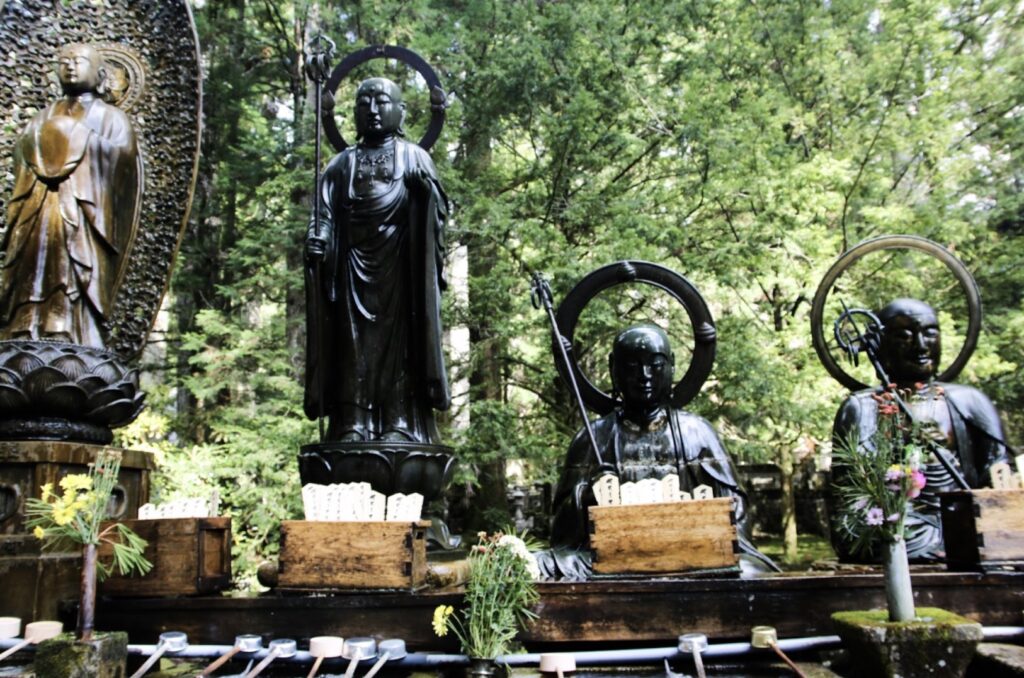
Shingon Buddhism, founded by the monk Kūkai (空海, 774–835), emphasizes esoteric practices designed to connect the practitioner with the ultimate truth of the cosmos. Unlike Zen, which stresses silence and simplicity, Shingon employs a rich tapestry of visualization, sacred sounds, and ritual gestures. These methods are not symbolic in the abstract sense but are considered direct gateways to awakening, embodying the reality of enlightenment in each act of practice.
Central to Shingon meditation is the doctrine of the three mysteries (三密, sanmitsu): body, speech, and mind. By uniting these through mudras (hand gestures), mantras (sacred chants), and mandalas or visualizations, practitioners harmonize their individual being with the universal Buddha. Meditation in Shingon is thus more than a calming exercise — it is a transformative alignment with the very fabric of existence.
Among the many techniques of Shingon, three stand out as particularly influential: Ajikan (阿字観), Susokukan (数息観), and Asokukan (阿息観). Each offers a different pathway into spiritual clarity — Ajikan through visualization of the Sanskrit “A,” Susokukan through steady breath-counting, and Asokukan through purification with light and breath. Together, these practices reveal the Shingon vision of meditation as a ritual of awakening, integrating body, mind, and spirit into harmony with the cosmos.
Ajikan (阿字観)
Ajikan, meaning “contemplation of the letter A,” is one of the most profound practices in Shingon meditation. Practitioners focus on the Sanskrit letter “A,” often depicted on a lotus, as the symbol of ultimate reality. In Shingon thought, this “A” represents the origin of all things and the essence of Mahāvairocana Buddha, the cosmic Buddha of light and truth. By visualizing and meditating on this sacred syllable, practitioners seek to dissolve the boundaries between self and universe.
The practice involves placing an image of the letter before oneself, then breathing calmly while allowing the mind to merge with its presence. The goal is not merely to visualize but to become one with the symbol, realizing that the essence of existence is vast, luminous, and indivisible. In this way, Ajikan is not only a visual exercise but a deep spiritual encounter.
Historically, Ajikan has been regarded as a gateway to the highest realization in Shingon Buddhism. It requires both focus and openness, inviting the meditator to step beyond ordinary perception into the direct experience of universal wisdom. For modern practitioners, Ajikan can serve as a powerful reminder of life’s sacred dimension, grounding the mind in a sense of infinite connection and peace.
Susokukan (数息観)
Susokukan, or breath-counting meditation, is one of the simplest yet most effective methods in the Shingon tradition. The practice begins with sitting quietly, then counting each inhalation and exhalation up to ten before starting over. This rhythmic focus trains the mind to settle, strengthens concentration, and reduces restlessness, making it an excellent entry point for beginners.
On the surface, Susokukan may appear straightforward, but its power lies in its ability to tame the wandering mind. By returning to the count whenever thoughts drift, practitioners cultivate discipline and patience. Over time, the simple act of counting breath develops into a deeper awareness of the body, the present moment, and the impermanence of thought.
In Shingon practice, Susokukan is not just a tool for calmness but a preparation for more advanced esoteric methods like Ajikan. By grounding the mind through breath, one becomes ready to engage fully in visualization and mantra recitation. For those living in modern, busy contexts, Susokukan remains a practical and accessible way to regain clarity, composure, and balance.
Asokukan (阿息観)
Asokukan combines breath awareness with visualization, creating a practice of purification and renewal. The meditator breathes deeply while visualizing themselves surrounded by a radiant, cleansing light. With each inhalation and exhalation, body and mind are harmonized, and obstacles — whether emotional, mental, or spiritual — are gradually released.
This practice reflects Shingon’s view that meditation is not just internal reflection but also a process of energetic transformation. The light symbolizes the universal energy of the Buddha, and by visualizing it permeating one’s being, practitioners align themselves with cosmic purity and truth. In this way, Asokukan serves both as a healing method and a spiritual discipline.
Traditionally, Asokukan has been used to remove inner disturbances and cultivate clarity of heart and mind. For modern practitioners, it can be adapted as a gentle but powerful method for reducing stress, restoring equilibrium, and reconnecting with a sense of sacred presence in daily life. As with all Shingon meditation, the key lies in sincerity and consistency, allowing the practice to reshape one’s inner landscape over time.
Tendai Buddhism Practices
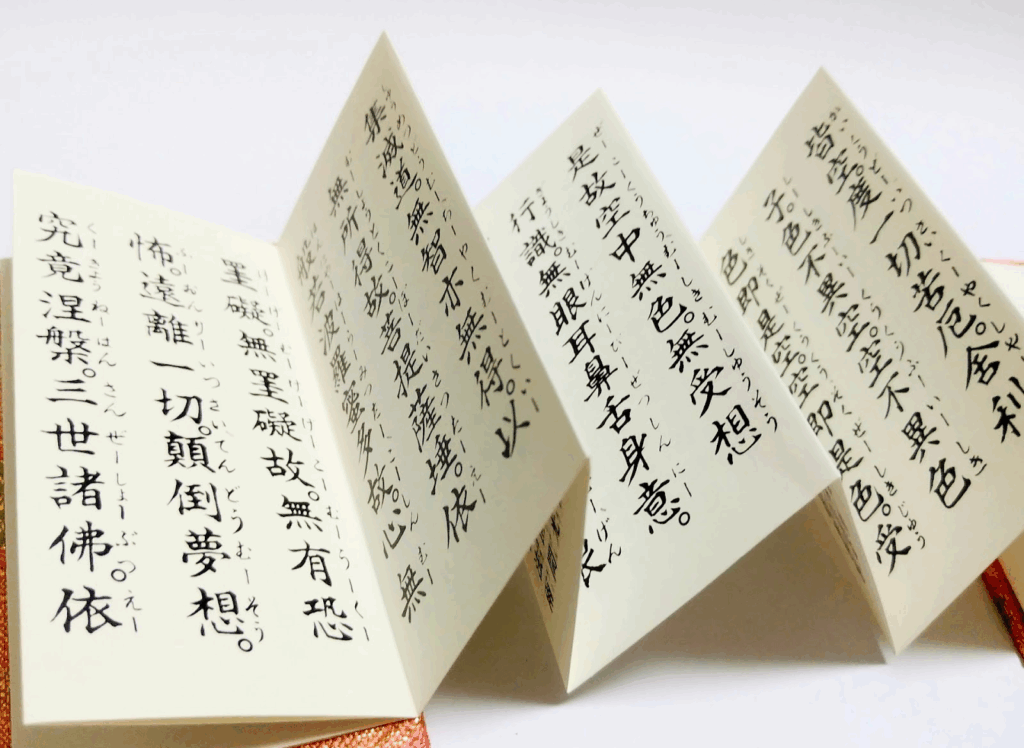
Kanzeon (観音観)
Kanzeon meditation centers on the bodhisattva Kannon (観音, Avalokiteśvara), the embodiment of compassion in Mahāyāna Buddhism. In Tendai practice, meditators often visualize Kannon’s serene form or recite her name, sometimes in combination with chanting the Heart Sutra. This dual method of visualization and mantra helps anchor the mind while cultivating an atmosphere of compassion and receptivity.
The practice goes beyond calming the mind; it aims to awaken an inner resonance with Kannon’s qualities of mercy and empathy. By envisioning her presence, practitioners strengthen their own capacity for patience and kindness, turning meditation into a relational, heart-opening experience. Over time, this visualization becomes a way of seeing the world itself as infused with compassion.
Historically, Kanzeon worship became one of the most widespread practices in Japan, accessible to monastics and laypeople alike. Pilgrimage routes with temples dedicated to Kannon reinforced her role as a protector of everyday life. For modern practitioners, Kanzeon meditation provides a deeply personal yet universal path: through focusing on the bodhisattva of compassion, one learns to embody compassion toward oneself and others.
Marishikan (摩利支観)
Marishikan is the meditation on Marici (摩利支天), a deity of light and protection with roots in Indian and Chinese Buddhism. In Japan, this practice was particularly popular among samurai, who sought Marici’s blessing for fearlessness in battle. Visualizing Marici surrounded by radiant light, practitioners would invoke her qualities of invisibility, agility, and courage.
The imagery of Marici emphasizes resilience in the face of danger and the ability to move unharmed through obstacles. For the meditator, focusing on her light becomes a way to strengthen inner resolve and to cultivate a spirit of fearlessness. Even outside of martial contexts, the practice nurtures confidence, clarity, and the ability to stand firm amidst uncertainty.
Although less widely practiced today, Marishikan remains an important example of how meditation adapted to Japan’s cultural and historical needs. For modern seekers, this visualization can be reinterpreted as a method for overcoming personal fears, grounding oneself in strength, and drawing inspiration from a tradition that once guided warriors through life-and-death situations.
Shōmyō (声明, Sacred Chanting)
Shōmyō, or sacred chanting, is a meditative art form in Tendai Buddhism that involves the melodic recitation of sutras. Unlike ordinary reading, shōmyō employs rhythm, pitch, and intonation to transform scripture into living sound. The vibration of the chant is seen as both a devotional offering and a direct expression of Buddha’s truth.
This practice engages body, speech, and mind together. The voice becomes a vehicle for concentration, harmonizing breath and rhythm while freeing the practitioner from distraction. The meditative quality arises not only from listening to the chant but from embodying it fully, allowing the sound to resonate both inwardly and outwardly.
Historically, shōmyō was performed in temples and ceremonies, where the collective chanting of monks created an atmosphere of profound stillness and awe. Today, it can still be experienced in Tendai temples or adapted for personal practice, offering a meditative gateway through sound. For modern practitioners, sacred chanting highlights that meditation is not confined to silence — sometimes, awakening arises through the resonance of the human voice.
Shugendō and Esoteric Practices
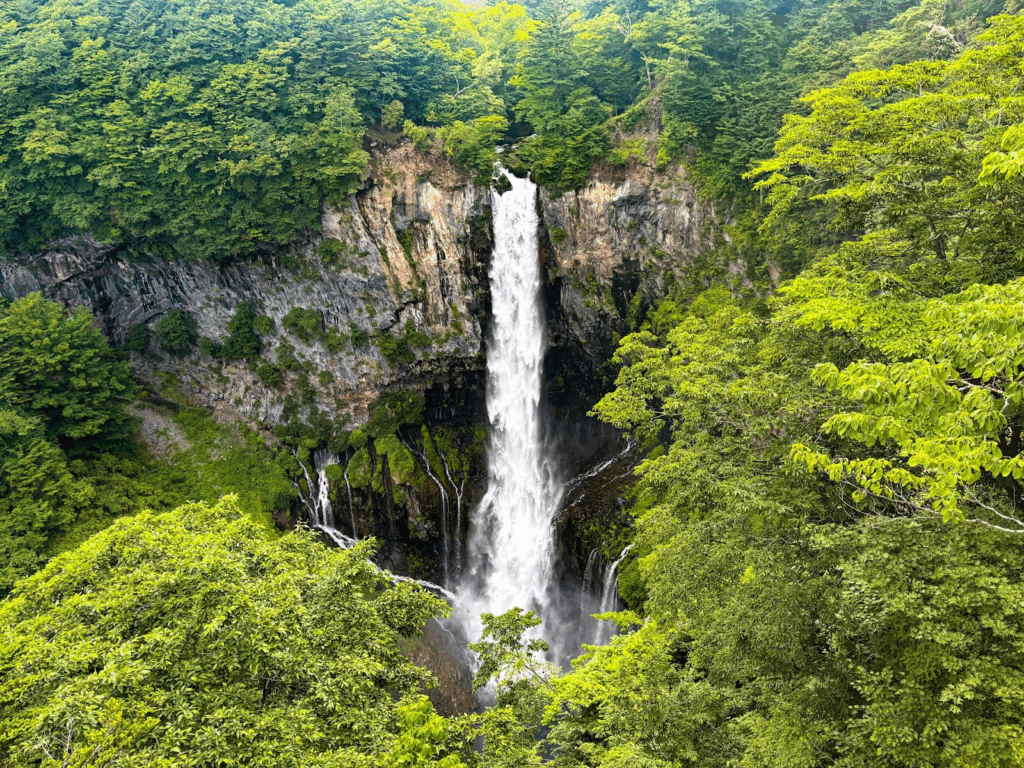
Mountain Meditation (山修行 / 山岳修行)
Mountain meditation, known in Japanese as yamashugyō or sangaku shugyō (山修行 / 山岳修行), is central to the ascetic tradition of Shugendō. Practitioners called yamabushi (mountain monks) retreat into the wilderness, engaging in rituals that combine elements of Buddhism, Shintō, and indigenous animism. The mountains are seen as sacred realms where divine forces and spiritual power are most accessible, making them ideal sites for deep meditation and transformation.
The practice often includes a combination of physical austerities: long treks across rugged terrain, fasting, chanting, and immersion in natural elements. These acts are not merely for endurance but are intended to strip away attachments and dissolve the boundary between human and nature. By confronting the raw forces of the mountain — cold, hunger, fatigue — practitioners cultivate resilience, humility, and spiritual clarity.
Historically, yamabushi believed that the mountains themselves were living mandalas, embodying cosmic truths. Meditation in this environment allowed them to merge with the rhythms of nature and commune with deities or Buddhas beyond human perception. For modern seekers, mountain meditation can be adapted through mindful hiking or retreats in natural settings, offering a way to reconnect with the earth and rediscover inner stillness through communion with the natural world.
Takigyō (滝行, Waterfall Meditation)
Takigyō, or waterfall meditation, is one of the most iconic practices of Shugendō. Practitioners stand beneath the crashing flow of a waterfall while reciting mantras or sutras, using the cold, relentless water as a form of purification. The physical intensity of the practice shocks the body, stills the mind, and fosters a deep sense of renewal.
Beyond its dramatic appearance, takigyō embodies a spiritual symbolism: the waterfall represents both cleansing and rebirth. Immersion under the torrent washes away impurities, attachments, and mental clutter, allowing the practitioner to emerge with a fresh sense of clarity. The rhythmic roar of the water also acts as a natural focus for concentration, drowning out discursive thought and anchoring awareness in the present moment.
Traditionally, takigyō has been performed by yamabushi, monks, and lay practitioners alike, often as part of larger mountain retreats. Today, it remains a living practice in temples and training centers across Japan, sometimes open to the public as a form of spiritual discipline. For contemporary meditators, waterfall meditation serves as a vivid reminder that growth often arises through discomfort, and that surrendering to natural forces can lead to profound inner purification.
Shintō-Linked Practices
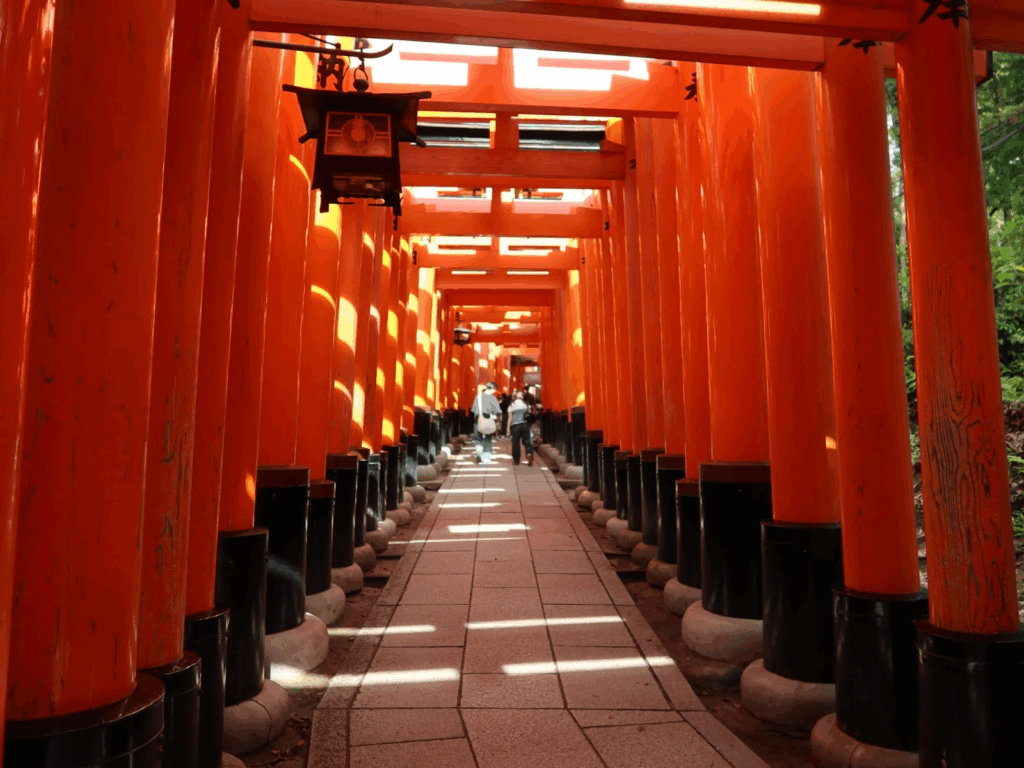
Norito Chanting (祝詞)
Norito (祝詞) are formal prayers or liturgical recitations in Shintō, traditionally addressed to kami. These prayers are composed in a rhythmic, poetic style, and when chanted slowly and attentively, they become a form of meditation in themselves. The practitioner’s mind and breath align with the cadence of the words, fostering a state of presence and reverence.
The practice emphasizes harmony with nature and the divine. By chanting norito, practitioners seek to attune their inner state to the rhythms of the cosmos, acknowledging gratitude and offering respect to the kami. The meditative aspect comes not only from the sound of the words but also from the sincerity and intention behind them.
Historically, norito chanting was performed during rituals at shrines, often by priests, to sanctify space and invite blessings. Today, it remains central in Shintō ceremonies but can also be practiced privately as a way to cultivate mindfulness and spiritual grounding. For contemporary seekers, chanting norito serves as a bridge between meditation and prayer, allowing them to enter a contemplative state while connecting with the living traditions of Japan.
Modern Adaptations
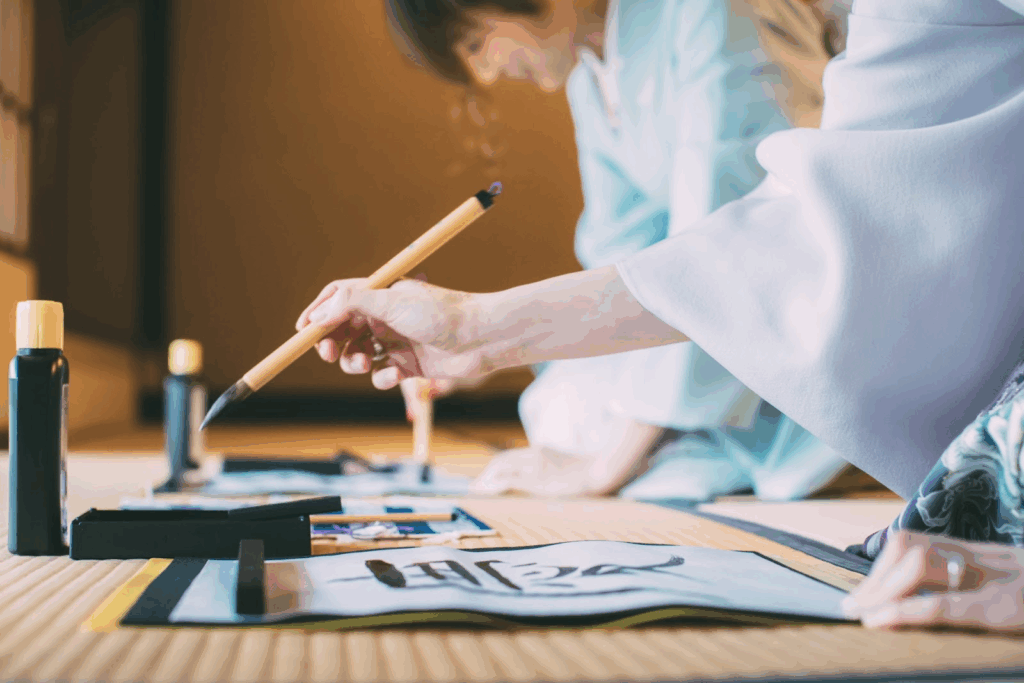
Tea Ceremony Meditation (茶道, as Moving Meditation)
The Japanese tea ceremony (sadō or chanoyu) is often described as a form of meditation in motion. Every gesture — from folding the cloth to whisking the tea — is carried out with care, mindfulness, and precision. Rooted in Zen aesthetics, the tea ceremony emphasizes simplicity, harmony, and the deep presence of host and guest. The ritual is not about drinking tea for refreshment, but about creating a sacred space where each movement embodies awareness.
The meditative quality arises from the slowness and deliberation of the process. The practitioner enters a flow state, fully present in the arrangement of utensils, the sound of boiling water, and the graceful handling of the tea bowl. Silence often frames the experience, inviting both host and guest into a shared moment of contemplation. In this sense, tea becomes a vehicle for awakening — a reminder that mindfulness can be woven into the smallest of acts.
For modern practitioners, tea ceremony meditation offers a way to bring Zen principles into daily life. Even without the full ritual, preparing tea slowly and attentively can cultivate calm and presence. By transforming an everyday habit into an art of mindfulness, the tea ceremony demonstrates how ordinary actions can become extraordinary pathways to stillness.
Shodō (書道, Calligraphy)
Shodō, the art of Japanese calligraphy, is another discipline often regarded as a form of meditation. Using brush, ink, and paper, the practitioner writes characters with deliberate strokes, merging focus, breath, and movement. In Zen contexts, calligraphy is not only about producing beautiful writing but also about expressing the state of the mind at the moment of creation. Each line becomes a mirror of the inner self.
The act of writing requires stillness and concentration. The brush must be moved with confidence, as hesitation shows in the ink. This cultivates a one-pointed awareness where body and mind act in harmony. Like zazen, shodō teaches practitioners to let go of attachment to results — once the stroke is made, it cannot be undone. The process itself is the practice.
Historically, Zen masters used calligraphy as a way to transmit insight beyond words, creating single characters like “mu” (無, emptiness) or “heart” (心) that embodied their realization. For modern learners, shodō provides a tangible way to experience meditation through art. Whether practiced traditionally or in simplified form, it reminds us that mindfulness can be expressed not only in silence but also in creative action.
How to Practice Japanese Meditation at Home: Zazen, Shingon, and More
Japanese meditation can be practiced at home in many forms, depending on which tradition speaks to you. The key is consistency over duration — even 5–10 minutes daily can create meaningful change. Below are ways to adapt each practice for personal use:
Zen Practices
- Zazen / Shikantaza: Prepare a quiet space with a cushion or chair. Sit upright, hands in your lap, and keep your gaze soft. In zazen, focus on the breath; in shikantaza, rest in pure awareness, allowing thoughts and sensations to pass naturally.
- Kinhin: Choose a hallway, garden path, or quiet space. Walk slowly, aligning each step with your breath, keeping your posture straight and your awareness rooted in movement.
- Koan Meditation: Select a traditional koan (e.g., “What is the sound of one hand clapping?”). Sit quietly with the question, allowing it to dissolve ordinary thinking rather than seeking an answer.
- Nenbutsu: Silently or audibly recite Namu Amida Butsu, letting the phrase steady the mind and cultivate gratitude and trust.
- Metta Meditation: Sit comfortably and repeat phrases of loving-kindness such as “May I be safe, may I be peaceful.” Extend these wishes gradually to loved ones, strangers, and even adversaries.
Shingon Practices
- Ajikan: Place an image of the Sanskrit letter “A” before you. Sit calmly and visualize it with steady breath, allowing your awareness to merge with its presence.
- Susokukan: Sit quietly and count each inhalation and exhalation up to ten, then begin again. Return to the count whenever your attention drifts.
- Asokukan: Breathe deeply while imagining yourself surrounded by radiant light. With each breath, allow this light to purify body and mind.
Tendai Practices
- Kanzeon: Visualize the bodhisattva Kannon (Avalokiteśvara) or softly chant her name. You may also recite the Heart Sutra, focusing on embodying compassion.
- Marishikan: Visualize the protective deity Marici shining with radiant light. Imagine her qualities of courage and resilience filling your own body and mind.
- Shōmyō (Sacred Chanting): Select a sutra or passage. Chant it slowly with attention to rhythm, tone, and breath, letting the vibration itself become the meditation.
Shugendō and Esoteric Practices
- Mountain Meditation: If possible, practice outdoors in nature. Walk mindfully through hills or forests, or sit quietly, breathing with the rhythms of wind and earth.
- Takigyō (Waterfall Meditation): If a waterfall is not accessible, adapt the practice with a cold shower. Stand under the water, recite a mantra, and imagine impurities being washed away.
Shintō Practices
- Misogi: If you have access to a river or the sea, immerse yourself mindfully, focusing on purification. At home, a cold bath or shower can serve the same purpose.
- Norito Chanting: Recite Shintō prayers or compose simple words of gratitude. Speak slowly and clearly, aligning your breath with the rhythm of the chant.
Modern Adaptations
- Tea Ceremony Meditation: Prepare tea with deliberate care. Focus on each gesture — boiling water, whisking, pouring, and sipping — treating the entire process as a meditation.
- Shodō (Calligraphy): Take brush and ink (or pen and paper) and write slowly, with full attention to each stroke. Let the writing reflect your inner state, without clinging to perfection.
By choosing even one of these methods and practicing with sincerity, you can bring the spirit of Japanese meditation into your home. Each approach opens a different doorway, but all lead toward greater awareness, balance, and inner peace.
Benefits of Japanese Meditation
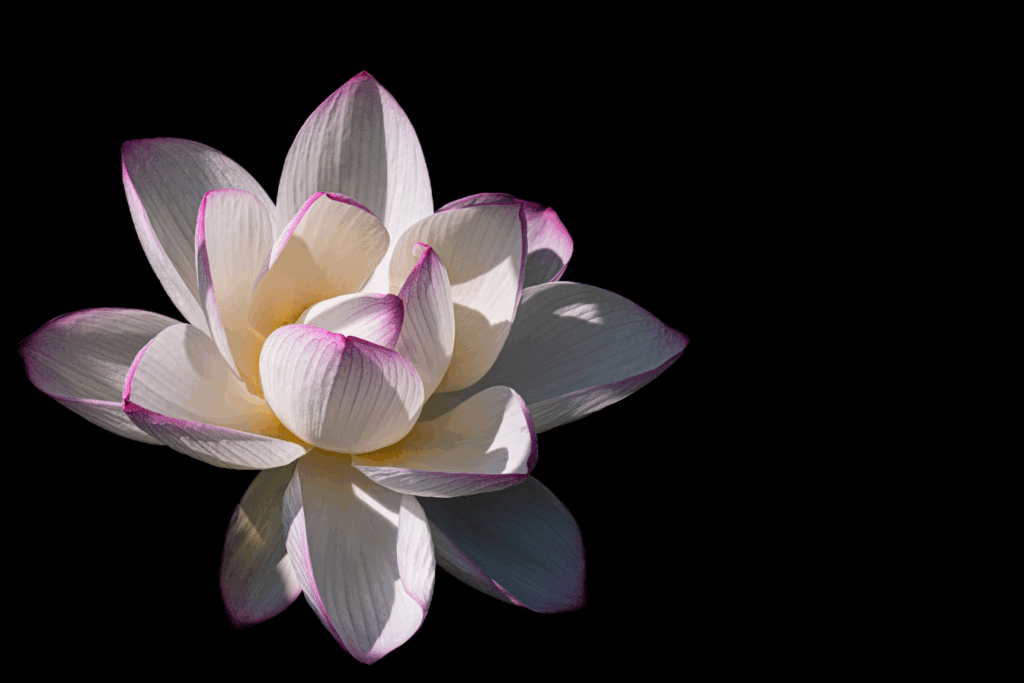
Practicing Japanese meditation can help you:
- Reduce stress and anxiety
- Improve concentration and emotional regulation
- Enhance creativity and clarity
- Deepen spiritual awareness
- Improve sleep quality
Scientific studies show that regular meditation improves focus and reduces cortisol levels, making it a powerful tool for modern life.
Conclusion
Japanese meditation is more than a wellness trend – it is a path to inner calm and cultural wisdom. Whether you are a beginner or experienced meditator, exploring these practices can help you live with more balance, clarity, and compassion.
Frequently Asked Questions
FAQ 1: What makes Japanese meditation unique compared to other styles?
Answer: Japanese meditation emphasizes silence, discipline, and spiritual grounding, combining Zen and Shingon traditions.
Real Results: Studies show Zen meditation practitioners demonstrate greater stress resilience than general mindfulness groups.
Takeaway: Silence is the strength of Japanese meditation
FAQ 2: Can Japanese meditation improve sleep?
Answer: Yes. By focusing on breathing and posture, Japanese meditation can help calm the nervous system and potentially improve sleep quality.
Real Results: A randomized controlled trial published in JAMA Internal Medicine (MAPs vs. sleep hygiene education) showed significant improvements in sleep quality, fatigue, and depressive symptoms.
Takeaway: Even short-term meditation can positively impact sleep quality.
FAQ 3: How long should I practice Japanese meditation daily?
Answer: Beginners can start with 5–10 minutes, gradually increasing as focus improves.
Real Results: Research published in Frontiers in Psychology suggests that even brief daily meditation sessions can significantly reduce stress levels.
FAQ 4: Do I need special equipment for Japanese meditation?
Answer: No, just a quiet space and a cushion or chair are enough.
Real Results: Monks in Japan often meditate with only a simple mat or seiza bench.
Takeaway: Simplicity is part of the practice
FAQ 5: Can children benefit from Japanese meditation?
Answer: Yes, guided meditation can help children improve focus and emotional control.
Real Results: School-based mindfulness programs in Japan and abroad have shown improvements in concentration and emotional regulation within weeks.
Takeaway: A calm child grows into a strong adult
FAQ 6: Is Japanese meditation religious?
Answer: It has Buddhist roots, but many modern practitioners use it for mindfulness and well-being.
Real Results: Surveys show over half of global meditators practice Zen for mental clarity, not religious reasons.
Takeaway: Spiritual roots, universal benefits
FAQ 7: What is the difference between zazen and shikantaza?
Answer: Zazen includes breath focus, while shikantaza is pure awareness without focus.
Real Results: Advanced Zen practitioners report higher mindfulness scores in shikantaza practice.
Takeaway: Different doors, same path to awareness
FAQ 8: Can Japanese meditation help with anxiety?
Answer: Yes. Breathing- and posture-based meditation can lower stress hormones and reduce anxiety.
Real Results: A clinical trial on Mindfulness-Based Stress Reduction (MBSR) reported about a 30% reduction in anxiety symptoms, comparable to medication.
Takeaway: Meditation may provide benefits comparable to medication.
FAQ 9: How do I know if I am meditating correctly?
Answer: The goal is not perfection but presence. Returning to breathing after distraction means you are meditating correctly.
Real Results: Even experienced Zen monks report wandering thoughts but return gently to breath.
Takeaway: Meditation is returning, not achieving
FAQ 10: Can Japanese meditation improve productivity at work?
Answer: Yes. Even short meditation breaks can enhance focus and decision-making.
Real Results: A systematic review found MBSR practice improved task performance by 20% and reduced mind-wandering by 30%.
Takeaway: Stillness strengthens action
Related Articles
- Randomized Controlled Trial published in JAMA Internal Medicine — The mindfulness meditation group showed significant improvements in sleep quality, fatigue, and depressive symptoms.
- Clinical Trial on MBSR (Mindfulness-Based Stress Reduction) — Results indicated anxiety symptoms improved by about 30%, comparable to medication.
- Review Study in the Open Psychology Journal — MBSR practice increased work efficiency by 20% and reduced mind-wandering by 30%.
- What Is Gassho? The Meaning and Practice of a Timeless Gesture — Historical background of gassho in Japanese Buddhism and its significance as meditation.
- Understanding Meditation in Buddhism — Overview of Buddhism and meditation, including Zen, Shingon, and Tendai practices.
